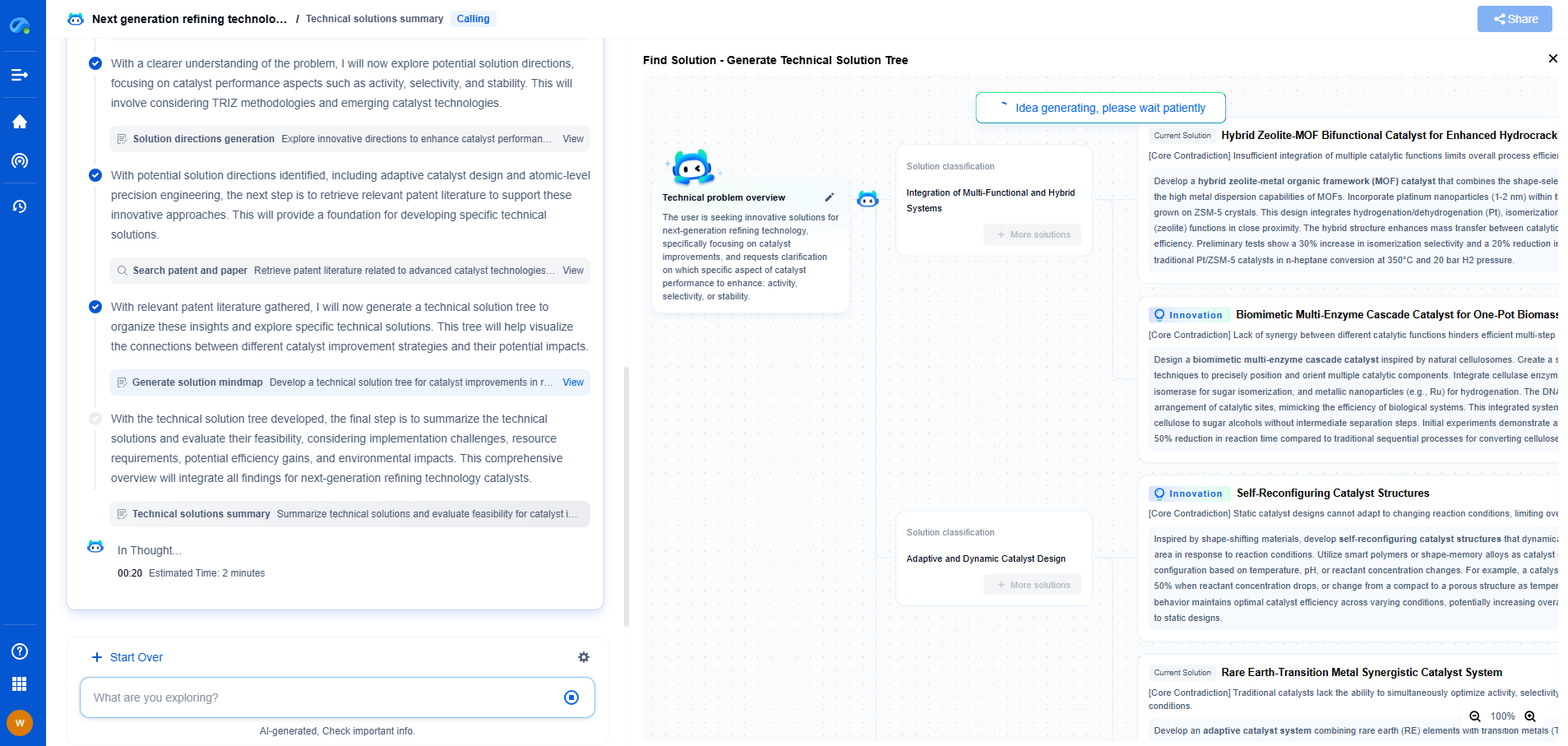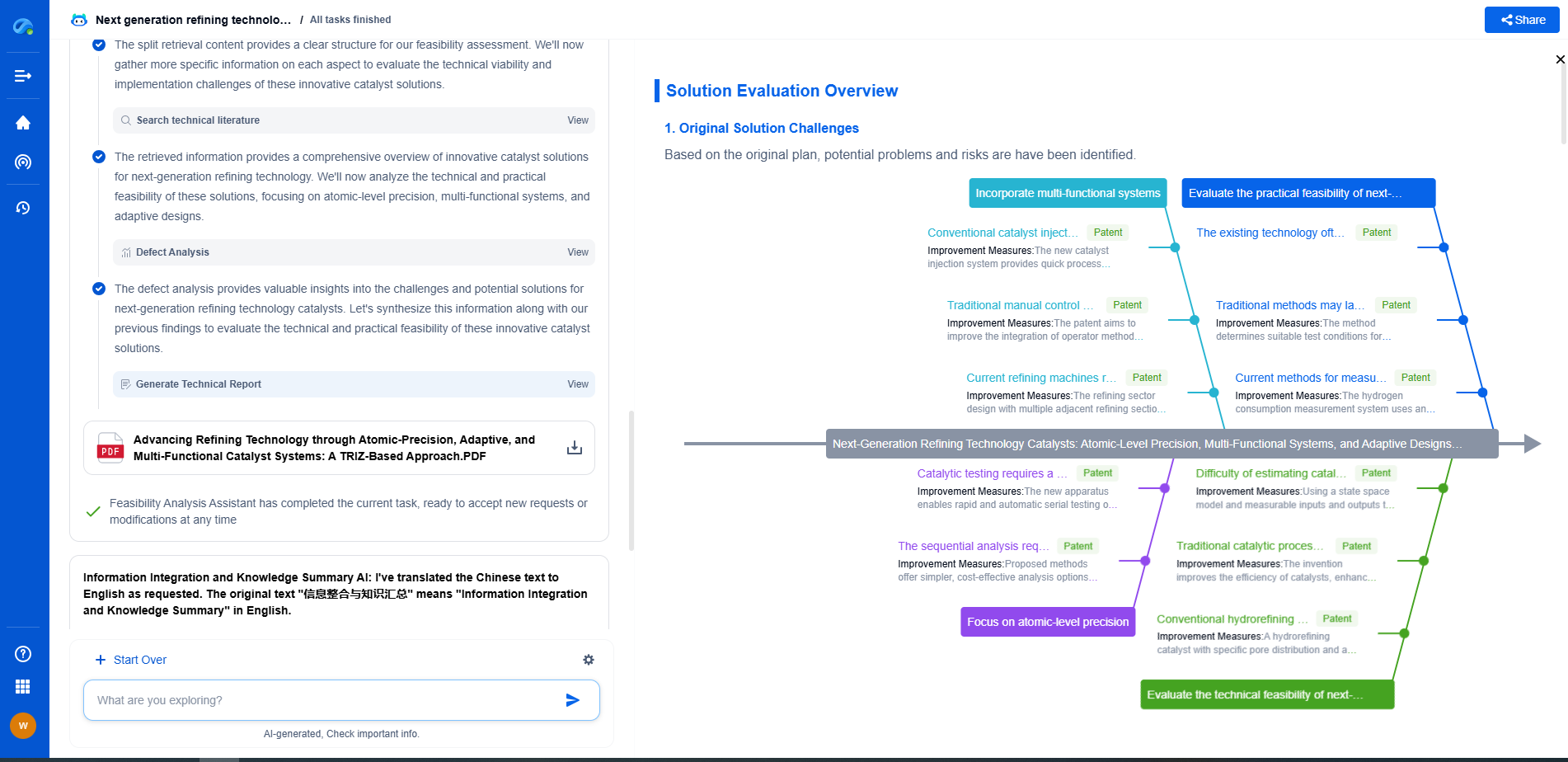3-Blade vs. 2-Blade HAWTs: Pros and Cons
JUN 26, 2025 |
The world of horizontal axis wind turbines (HAWTs) is diverse, and one of the key design choices is the number of blades. The most common configurations are 2-blade and 3-blade turbines, each with its distinct set of advantages and disadvantages. Understanding these differences is crucial for both manufacturers and operators as they strive for efficiency, reliability, and cost-effectiveness. In this article, we'll delve into the pros and cons of 3-blade versus 2-blade HAWTs.
Efficiency and Performance
3-Blade HAWTs:
One of the primary advantages of 3-blade turbines is their efficiency. The aerodynamic profile of a 3-blade rotor is optimized to capture wind energy effectively, allowing for smooth and stable operation. The addition of the third blade helps balance the rotor, reducing vibration and noise, which can improve performance over time. This stability is particularly important in areas with variable wind conditions, as it allows the turbine to produce consistent power.
2-Blade HAWTs:
While 2-blade turbines may not match the energy capture efficiency of their 3-blade counterparts, they have unique performance benefits. A 2-blade rotor can rotate faster, leading to higher rotational speeds and potentially increased energy output in high-wind situations. This can make them suitable for areas with consistently strong winds. However, their performance may suffer in low to moderate wind conditions due to the lack of a stabilizing third blade.
Cost Considerations
3-Blade HAWTs:
The cost of manufacturing and installing 3-blade turbines can be higher due to the additional blade and the need for a more robust support structure. However, their proven efficiency and reliability often justify the initial investment over time. They tend to have longer lifespans and require less maintenance, which can result in lower operational costs in the long run.
2-Blade HAWTs:
The two-blade design offers a significant cost advantage in terms of production and installation. With fewer materials required, 2-blade turbines can be more budget-friendly initially. However, they may incur higher maintenance costs due to increased wear and tear from vibrations and rotational dynamics. This can affect their overall cost-effectiveness, especially in areas with variable wind patterns.
Structural and Mechanical Impact
3-Blade HAWTs:
The structural dynamics of a 3-blade turbine are generally more balanced. The even distribution of forces across three blades minimizes stress on the hub and tower, contributing to better mechanical stability. This balance reduces fatigue and can enhance the overall lifespan of the turbine components.
2-Blade HAWTs:
The structural impact of 2-blade turbines is more complex. The uneven distribution of forces can lead to increased mechanical stress, causing more vibration and potential fatigue over time. This requires more robust engineering solutions to ensure durability, which can negate some of the initial cost savings. The increased mechanical load may also result in more frequent maintenance needs.
Aesthetic and Environmental Considerations
3-Blade HAWTs:
The classic 3-blade design is widely accepted and often considered more aesthetically pleasing. It has become the standard image of modern wind turbines. Additionally, their smoother operation results in less audible noise, which can be an important factor for installations near residential areas.
2-Blade HAWTs:
Aesthetic preferences can be subjective; however, 2-blade turbines may be perceived as less conventional. They can have a more pronounced visual impact due to their faster rotational speed and increased noise levels, which might be a concern in noise-sensitive environments.
Conclusion
The choice between 3-blade and 2-blade HAWTs depends on various factors, including wind conditions, budget constraints, and environmental considerations. While 3-blade turbines offer stability, efficiency, and a longer operational life, they come with higher initial costs. In contrast, 2-blade turbines provide cost savings upfront but may require more maintenance and could present challenges in terms of mechanical stress and noise.
Ultimately, the decision should be based on a comprehensive analysis of the specific site conditions and project goals. By weighing the pros and cons carefully, operators can select the turbine design that best aligns with their energy production objectives and financial strategy.
Empower Your Wind Power Innovation with AI
In the fast-evolving landscape of wind turbine technology—where aerodynamic optimization, generator efficiency, and structural innovation are critical—staying ahead requires more than just expertise. It requires intelligent tools that accelerate R&D and protect your competitive edge.
Patsnap Eureka is your AI-powered research assistant, designed specifically for innovators like you working at the forefront of Wind Motors. Whether you're analyzing blade design trends, exploring novel gearbox architectures, or navigating complex global patent landscapes, Eureka streamlines the entire process with precision and speed.
👉 Experience how Patsnap Eureka can revolutionize your R&D and IP strategy. Request a demo today and power up your next breakthrough.
- R&D
- Intellectual Property
- Life Sciences
- Materials
- Tech Scout
- Unparalleled Data Quality
- Higher Quality Content
- 60% Fewer Hallucinations
Browse by: Latest US Patents, China's latest patents, Technical Efficacy Thesaurus, Application Domain, Technology Topic, Popular Technical Reports.
© 2025 PatSnap. All rights reserved.Legal|Privacy policy|Modern Slavery Act Transparency Statement|Sitemap|About US| Contact US: help@patsnap.com

